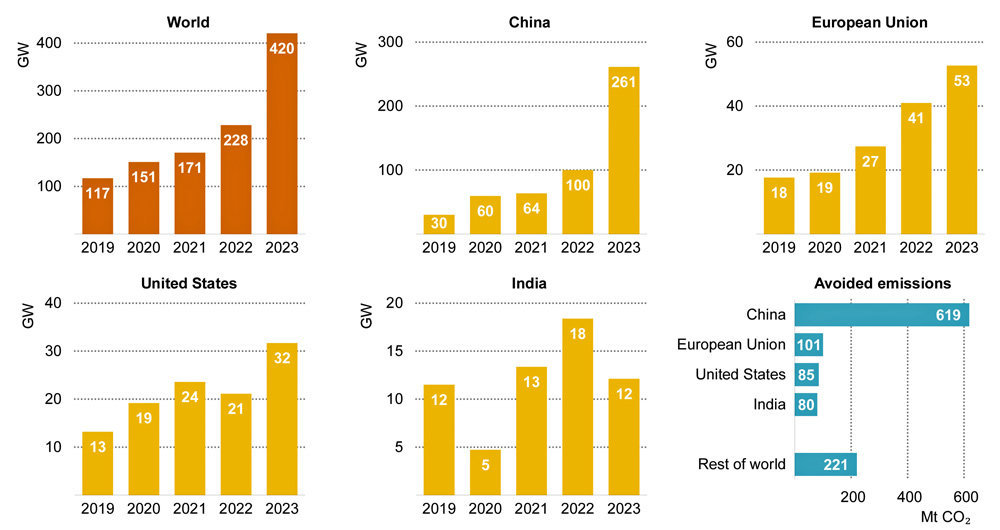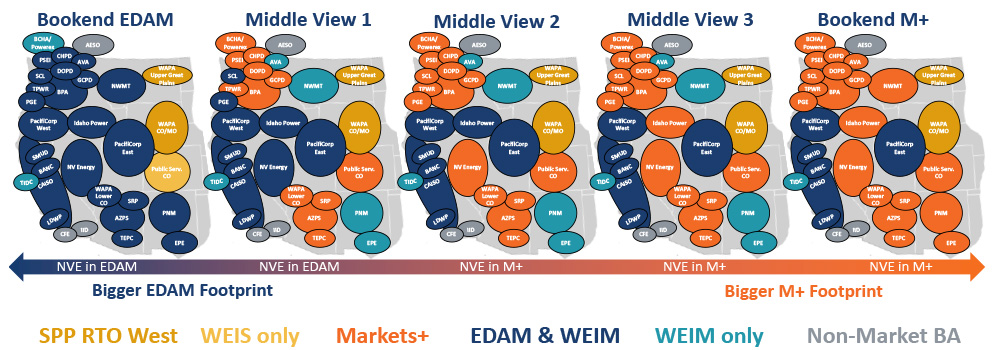Targeted electrification could allow decommissioning of up to 10% of gas distribution mains, representing “a promising strategy but not a silver bullet to solve the long-term gas cost challenge,” researchers told the California Energy Commission.
At a Feb. 28 workshop, Energy and Environmental Economics (E3), nonprofit Ava Community Energy and Gridworks presented the results of CEC-funded research on whether pairing gas decommissioning with targeted building electrification — transitioning whole neighborhoods to electric rather than having a mix of services — could provide gas system savings while promoting equity and meeting community needs.
As building electrification advances, gas system costs will spread across fewer customers, leaving renters and low-income homeowners who cannot afford to electrify the most vulnerable, a “major equity concern,” E3 Associate Director Ari Gold-Parker said.
“We think this approach could be part of what we’re calling a ‘managed transition’ to reduce gas system spending and help to manage gas rates in the long term,” he said.
E3 and its partners said their research found 5-10% of gas distribution main miles could be decommissioned to save money over the next 20 years. To be eligible, lines must be “hydraulically feasible” — able to be removed without impacting gas system safety and reliability — such as mains at the end of radial systems. The team also targeted lines with the highest scores for operational risks — those most likely to need replacement within a decade.
“Even though this is a fairly small share of total main miles, these projects still reflect a very important opportunity to avoid a large share of the capital cost that would otherwise be incurred on the gas system during this time period,” Gold-Parker said.
The researchers concluded that combining targeted electrification with gas decommissioning can provide net benefits to the state, electric ratepayers and gas ratepayers. But they said there is a significant funding gap for the upfront costs of electrifying buildings, calling it the “missing money.”
In addition to high upfront costs, other challenges include customer preferences and current policies and regulatory rules, they said.
Identifying Sites
The first step of the research project was to develop a framework for finding potential sites for targeted electrification. From 11 candidate sites, the team proposed three pilot sites in Ava Community Energy’s service territory: East Oakland (an urban single-family, disadvantaged community with 70 gas meters); Oakland-Allendale (a mix of single-family, multifamily, and nonresidential buildings with 110 gas meters) and San Leandro (a suburban single-family disadvantaged community with 190 gas meters). The CEC grant did not include funding for implementation; the project team said in their June interim report that they plan to apply for funding to implement one or more pilot projects.
The team used Pacific Gas and Electric’s gas asset analysis tool to help them find areas that will likely need pipeline replacement. But the team said it needs a longer-term planning process to identify sites with enough lead time to implement electrification. Gas utilities identify these projects on the timeline of the general four-year rate case, but the researchers said a 10-year planning process was more appropriate.
Next, the team performed site-based benefit-cost analyses.
To address the “missing money” for the upfront costs of electrifying buildings, the team suggested repurposing savings to fund electrification, though that option could reduce long-term savings to gas ratepayers. “Even though this approach works on paper and might be valuable in the near-term, in the long term this approach would really undermine the potential for gas decommissioning projects to support the key equity objective of providing long-term cost reductions for gas ratepayers,” Gold-Parker said.
The greatest financial benefit will come from avoiding pipeline replacements. The study found that gas decommissioning will be the most cost-effective in less dense neighborhoods due to the cost of electrification. “While two gas decommissioning projects with the same length of gas mains will have the same gas pipeline savings, the costs of implementing a gas decommissioning project would be higher in a site with more dense development (i.e., with more customers to electrify),” the researchers said in their benefit-cost analysis.
Moving `at the Speed of Trust’
Ava Community Energy, which sells renewable energy in the East Bay, led efforts to engage its communities, including partnering with a community-based organization and the city of Oakland to host home energy resource fairs.
While the resource fairs provided educational opportunities for residents unfamiliar with electrification, Allison Lopez, senior analyst at Ava Community Energy, said attendance was very low.
“This could be for various reasons. Perhaps even the topic of electrification or home energy savings is a bit too foreign or novel to boost interest,” Lopez said. “While we think events like this have great potential, we found it very difficult to scale awareness about this project or gain feedback through this channel.”
Ava also partnered with Environmental Justice Solutions to assemble paid focus groups for residents in the proposed pilot sites. While attendance again was low, Lopez said they received good feedback.
Focus group participants expressed concern over the cost of electrification, increased electric bills and a lack of familiarity with electric equipment. Lopez said Ava is prioritizing affordability, working on improving communication and education, and building trust.
“We heard repeatedly that communities move at the speed of trust,” Lopez said. “It really takes a lot of time to build and maintain trust.”
For the plan to work, all pilot project site residents will need to consent to electrification, making implementation “extremely challenging,” Lopez said.
Recommendations
In addition to a longer-term capital project planning process and funding to address the upfront costs of electrification, the researchers called for better data and planning tools for site selection, and changes to utilities’ “obligation to serve.”
“In the current regulatory paradigm, utilities contend that 100% customer opt-in is required to decommission gas infrastructure. This requirement means large sites with many customers may prove difficult or impossible to implement gas decommissioning and even small sites may require substantial financial incentives to achieve 100% opt-in,” the researchers said. “Any gas system decommissioning projects pursued in the next few years will need to consider ways to work within the obligation to serve. In the longer term, California will need to evolve the obligation to serve to ensure it does not become a barrier to the state’s decarbonization goals.”
The researchers said the state and its utilities need a long-term plan for gas infrastructure aligned with the state’s climate goals. They noted the California Public Utilities Commission’s Long-Term Gas Planning proceeding “is entering a new phase focused on long-term planning for gas system decarbonization.”
“Clear plans and targets could provide key regulatory support for alternatives to gas pipeline replacement,” they said. “Long-term planning should consider the role of targeted electrification and gas decommissioning as part of a portfolio of measures to reduce gas system investments and mitigate long-term cost pressures.”
Next Steps
Ava is developing a deployment plan proposing a phased approach over a 10-year span beginning with community engagement.
“We recognize that this approach will take a lot of time and there will definitely be less certainty about whether customers will ultimately decide to remove gas service,” Lopez said. “But we believe this approach is in line with community feedback that we’ve received.”
The researchers noted their project considered two “important but distinct” equity goals: promoting electrification in disadvantaged communities and maximizing gas system cost savings.
“We believe the state may achieve better outcomes by developing and promoting different programs for these two goals,” they said.

